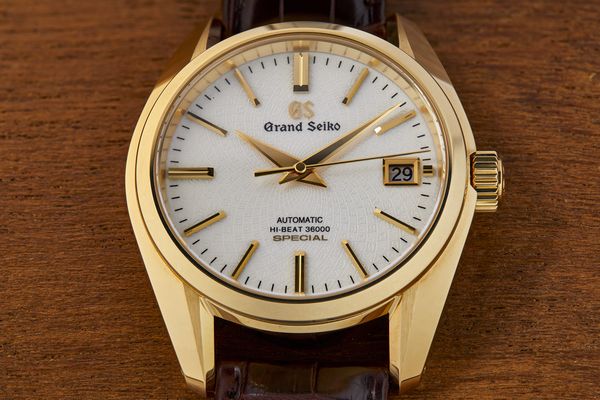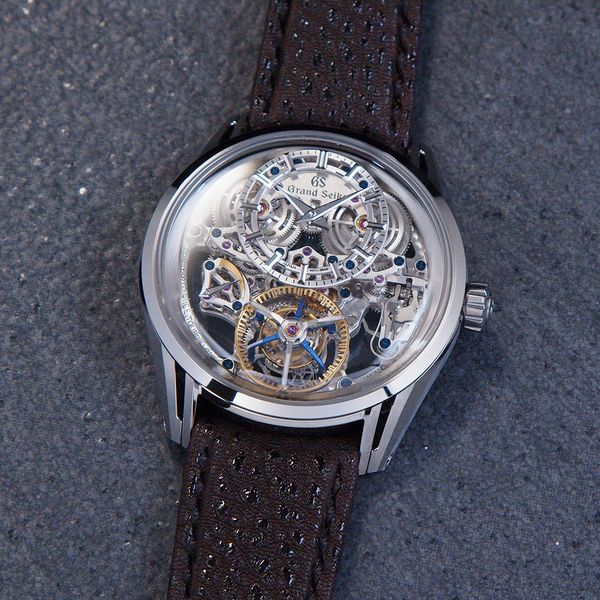Borne out of a quest to create the “ideal watch” and compete with Swiss precision timekeepers, the first Grand Seiko was a result of almost eighty years of effort on the part of the parent brand Seiko. Incorporated in 1881, with their first pocket watch debuting in 1895, and their first wristwatch in 1913, Seiko had long since strove for excellence on par with their competitors in Europe, believing it was possible to match or even surpass them in the realm of timekeeping accuracy, aesthetic quality, and overall durability.
In the years leading up to the first Grand Seiko, Seiko had released a series of watches that were impressively advanced as far as accuracy and reliability: first the Marvel in 1956, then the Lord Marvel in 1958, and finally the Crown in 1959. But these efforts paled in comparison to the first Grand Seiko, which was finally launched at the end of 1960. Bearing the new manually-wound caliber 3180, it was the first Japanese watch to be chronometer rated to Swiss standards, with top-grade accuracy and a 45-hour power reserve. It also set the benchmark for the design language that was to govern all future Grand Seikos to the present day. A lion emblem engraved on the case back denoted Seiko’s desires to all: to become the “king of watches”. To this day, the lion is still the logo of Grand Seiko.

This first Grand Seiko was released in gold-plated versions, and most interestingly, in platinum. The platinum iteration was priced at 140,000 yen, five times that of the rest of the Grand Seiko collection. The minute hand extended to the outer track to improve legibility, and the domed dial was set with solid gold faceted hour markers, polished to ensure readability even in the darkest of lighting conditions. Legibility and practicality define the design ethos of Grand Seiko, and each new watch after the first gave the Grand Seiko team a chance to further refine and rediscover these principles.

The second benchmark for Grand Seiko occurred in 1967 with the introduction of the 44GS. The commitment to reliability and accuracy was well-established, but the aesthetics had not yet fully evolved. While the “Self-Dater” of 1964 was the first Grand Seiko timepiece to feature “Zaratsu” polishing, a mainstay of the brand to the present day, the 44GS in 1967 calcified the design principles that are to guide the brand to this day. The process of Zaratsu polishing ensures that the polished surface is entirely free from distortions. Drawn from a distinctly Japanese tradition of beauty and artistry, the Grand Seiko style was established in three parts: one, wherever possible, surfaces should be flat; two, the flat surfaces should be as wide as possible; and three, every surface should be distortion-free. To this day, you will find these three principles as the foundation of every Grand Seiko timepiece.

With the rise of quartz watches, Grand Seiko would create the highest quality and most precise quartz movement: the 95GS. In 2004, Grand Seiko released the world’s first self-winding Spring Drive watch, the reference SBGA001, marrying quartz accuracy with mechanical reliability. Finally, in 2017, Grand Seiko debuted as an independent brand separate from Seiko, and their name traveled back to the 12 o’clock position on the dials of their watches.
Phillips is delighted to present a chapter of the New York Watch Auction: SEVEN dedicated to Grand Seiko. The watches on offer in the subsequent lots – a mix of the some of the rarest and most sought after vintage and modern Grand Seiko watches – are sure to thrill both the veteran Grand Seiko collector and the newcomer. It culminates with a unique example of the recently released Kodo Constant-Force Tourbillon, offered publicly for the first time.
